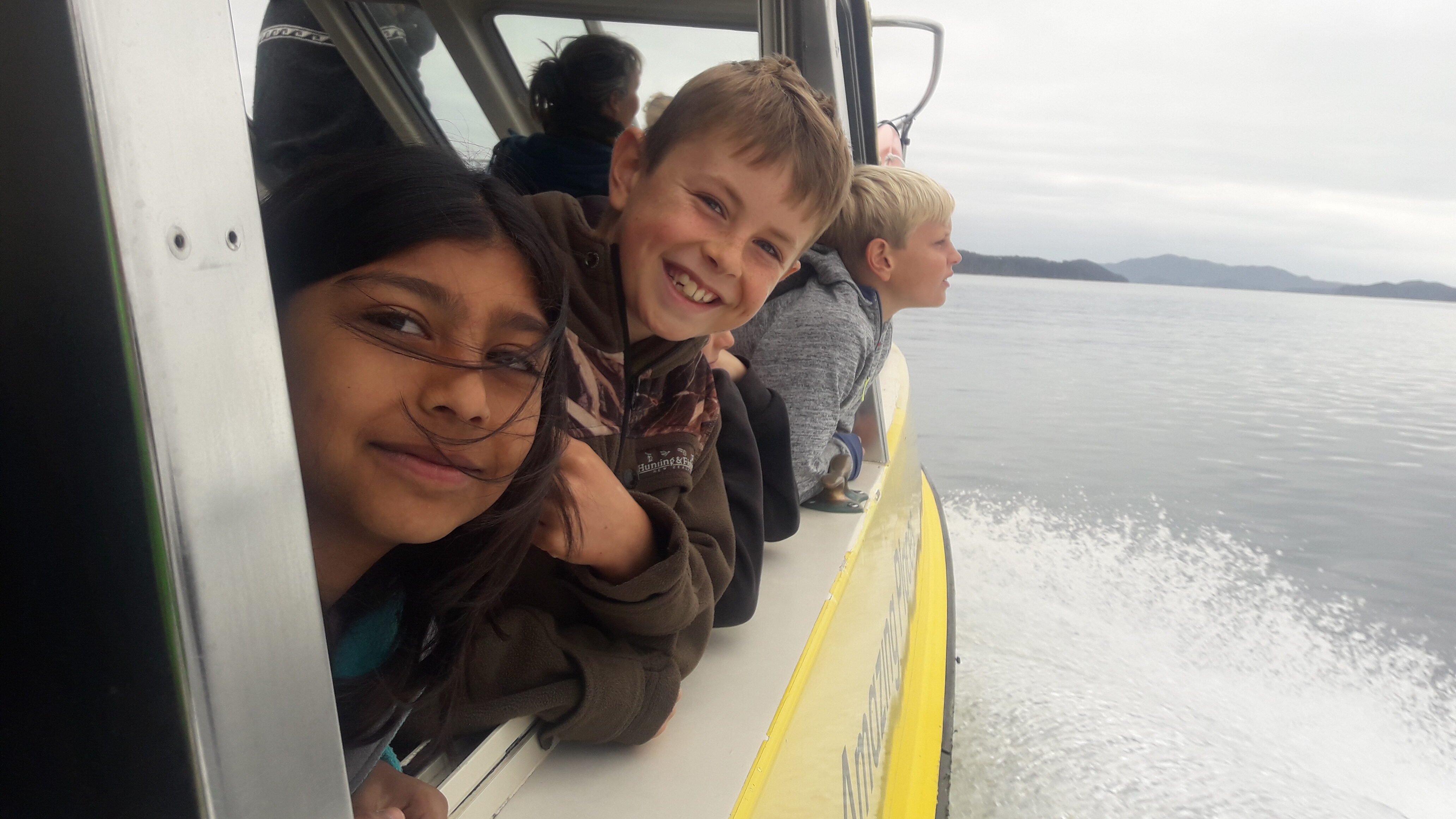Bringing back the birdsong – note by note – is what around 350 Northland children experience each year by taking an Explore launch trip to the predator-free islands of Ipipiri in the eastern Bay of Islands and participating in an educational programme known as ‘Floating Classrooms’.

“Floating Classrooms is a wonderful outdoor educational experience,” says educational facilitator, Ria Bright. “It mainly targets primary schools in the Bay of Islands area and is all about getting kids out into the environment. It’s about giving them the experience of doing things that will encourage them to become future kaitiaki of the islands.”
The activities include biosecurity, mapping, orientation, building traps, planting trees, learning to identify different bird-song and plants, then going into the bush to experience it all.
The environmental education programme is part of Project Island Song and is made possible by the generous support given by the Joyce Fisher Charitable Trust.
“The programme is totally free to the kids,” says Ria. “All they need to do is get to the wharf. Floating Classrooms would look very different without that level of support.”

A total of 10 Floating Classrooms are funded per year with a maximum of 40 pupils per class. Sometimes smaller schools such as kura kaupapa and homeschool groups double up. This year Floating Classrooms trialled a secondary school programme where senior music and art students participated in the programme using the experience to inspire artistic creativity which may feed into their NCEA compositions or artboards.
“Most of the schools involved are local and we have many lower decile schools in the area,” says Ria. “Lots of kids who go on the trips have never been out to the islands before. We even had a 60-year-grandmother come along who had always lived in the area, by the water, yet she’d never been to the islands.”
Children are accompanied on each trip by 4-6 parents and teachers.
“They’re a very important part of our audience, as it is all about encouraging inter-generational kaitiaki” says Ria. “Each school takes back a rat trap and weta house they have built and we encourage them to set up a pest control group at their school.”
Floating Classrooms are designed to be very hands on.

“It’s important to give the kids outdoor and experiential opportunities,” says Ria. “And because its very hands on we get great engagement. One teacher from a very low decile school was blown away by how engaged the boys, in particular, were. They were asking questions. They were enthusiastic. It’s authentic learning that’s meaningful to them.”
Much of the focus of Floating Classrooms is about the importance of biosecurity for the predator-free and pest-free islands.
“We do a pre-visit to the school before their trip and talk about the idea of birdsong and the history of Project Island Song,” Ria explains. “We talk about why biosecurity is important and introduce some of the terminology and what its about.”
Pest incursions can occur from people’s boats and camping gear, perhaps left in the garage all year since the last summer holiday and potentially harbouring a mouse nest, ants or rat.

“We encourage the kids to be vigilant if they go the islands themselves on family boats,” says Ria, “And we also encourage leadership on the Floating Classroom by having two children responsible for health and safety and two in charge of biosecurity. They pat down everyone’s bags and make sure everyone brushes their feet. They go through all the biosecurity before everyone goes on the boat.”
Onboard the chartered Explore boat, key historical and geographical points of interest are identified and the children look out for shore and seabirds on their way out to the main island, Urupukapuka.
“The amazing Explore crew are enthusiastic and possess an incredible amount of knowledge that they share, further enhancing the experience,” says Ria “The Explore company runs local tours and in the summer, a ferry to the island. They are very supportive of Project Island Song and are an important part of the Floating Classrooms experience.”
Floating Classrooms are running during Term 2 this year.
“It’s a quieter time for the boats and the weather has been good this year – we’ve had some amazing days.”

“On the island, the children make rat traps and some make weta houses,” says Ria. “They go out into the bush and look and listen for birds and in groups each child plants a native tree. Children, parents and teachers leave the island thrilled with the experience!”
After each island visit, Ria or one of her fellow educators return to the school and this time the children present to them.
“They show us what they’ve learned,” Ria explains. “It can be expressed in art, music, research they’ve done collectively or individual presentations. One class even wrote a song about the importance of biosecurity!”
The Floating Classroom season is also timed so that it’s just pre-science fair.
“We encourage a tie-in with the science fair,” says Ria. “Success also depends on the work done by the teachers. Some teachers do a lot of work before and after the Floating Classroom trip and that can really enhance the experience and engagement for kids.”

